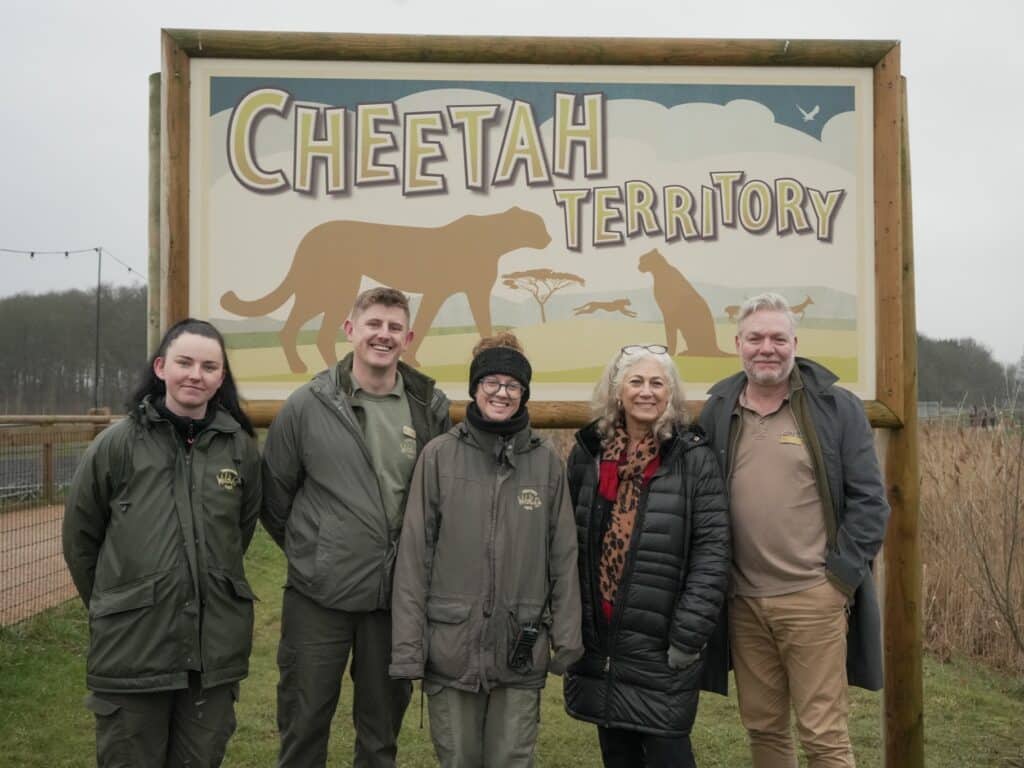Jaguars
A powerful predator under threat
Approximate number left in the wild
170000
Population decline over the past 21 years
20-25%
Loss of their historic range
40%
When you think about the mysterious animals that live in the Amazon Rainforest, the Jaguar might come to mind. They are really beautiful animals, with an iconic coat covered in rosettes. They’re also super powerful, and their jaw can break an actual turtle’s shell!
Jaguars are very important for the rainforest – they’re what is called an apex predator, which means they are at the top of the food chain keeping it nice and balanced. This means its super important to look after this amazing animal: for them, and for all other animals.
But Jaguars are in a difficult position. Their forest home is being destroyed, and they often end up in conflict with people. Because they’re so secretive, we don’t even know for sure how many are left in the wild. Conserving them is a huge challenge.
Will you help?
Jaguars are very important for the rainforest – they’re what is called an apex predator, which means they are at the top of the food chain keeping it nice and balanced. This means its super important to look after this amazing animal: for them, and for all other animals.
But Jaguars are in a difficult position. Their forest home is being destroyed, and they often end up in conflict with people. Because they’re so secretive, we don’t even know for sure how many are left in the wild. Conserving them is a huge challenge.
Will you help?

Threats
Habitat loss:
As you might know, the Amazon rainforest is disappearing. This is a huge problem for the Jaguar, reducing their preferred habitat, which is deep in the rainforest, near water. As the rainforest disappears, populations are also isolated, which makes them more vulnerable.Poaching:
A few years ago, Jaguars were often hunted for their beautiful coats. Thankfully, there are loads of laws against this now, so it isn’t as much of a problem. However, there is still demand for Jaguar parts like teeth and paws for traditional medicine, which leaves them at threat from poachers.Human-Jaguar conflict:
Their natural prey is hunted and is disappearing along with the forest. This means that Jaguars sometimes look for other food sources, like cows, so farmers and ranchers see them as pests and kill them.Working with
Jaguars
Wild Care Institute Atlantic Forest Project
WildLife Foundation has provided funding for a project run by WildCare Institute to help strengthen a ‘green corridor’ sanctuary for endangered animals, based in the Atlantic Forest in Misiones, Argentina. The funding will help in the creation of a ‘biological corridor’ to preserve the forest and create a safe haven for hundreds of endangered species who live there, including the Maned wolf, Lowland tapir and Jaguar. The project will fund a series of 18 educational and interactive workshops, led by some of Argentina’s leading environmental professionals designed to provide local communities with the skills and knowledge to improve their own livelihoods, such as livestock management, land restoration. As well as helping local communities to treasure wildlife, by providing education and alternatives to hunting and increasing enforcement measures to improve species survival. The funding will allow almost 4,000 hectares of land to be protected and help conserve Jaguars.Facts
Jaguars are not picky eaters. They’ll literally eat anything they come across, and have a whopping 85 prey species, including deer, lizards, and monkeys.
The word “Jaguar” comes from the indigenous “yaguar”, which means “he who kills with one leap”. We know – impressive!
The word “Jaguar” comes from the indigenous “yaguar”, which means “he who kills with one leap”. We know – impressive!
Seven Worlds, One Planet
WildLife Foundation has provided funding for a project run by WildCare Institute, based in the Atlantic Forest in Misiones, Argentina.









